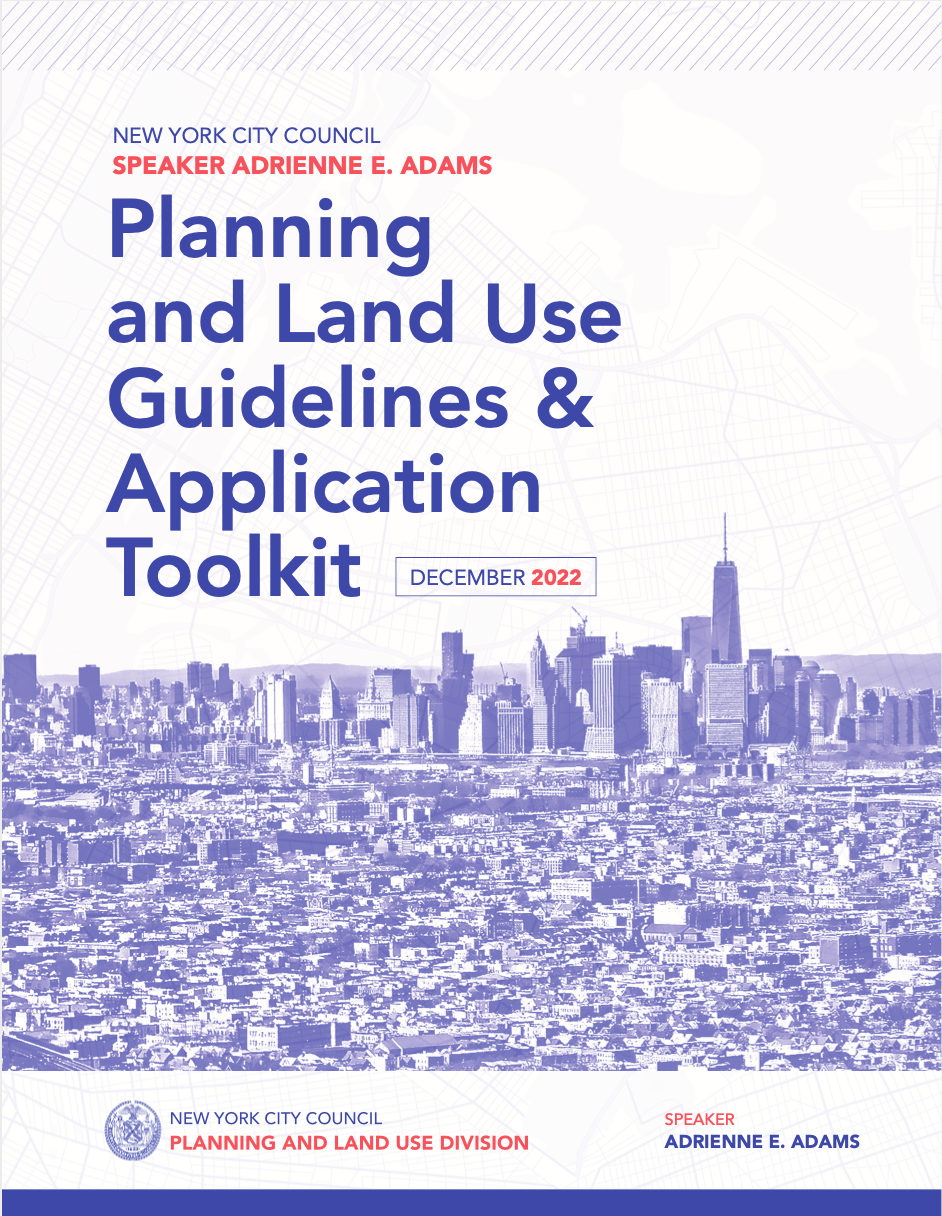Speaker Adrienne Adams’ Planning & Land Use Guidelines and Toolkit
Comprehensive planning must be featured throughout the land use process. Speaker Adams’ Planning and Land Use Toolkit provide Council Members, local communities, city agencies, and developers with a framework for improving the land use process to balance local community priorities with citywide needs. A pathway to increase housing production, affordability and equity is needed for our city.
Planning for a More Equitable and Affordable NYC
Far too often, New York City’s current process of decision-making on land use and development occurs on an ad-hoc basis, lurching from project to project with little grounding in the long-term needs and perspectives of local communities. As a result, policy tools for addressing the housing crisis and advancing inclusive solutions are underutilized.
Planning means understanding the conditions and challenges facing our city and its neighborhoods, identifying shared goals and principles, and applying policies to address them. Planning means being intentional about our future and making sure that our decisions collectively align with these goals.
The Land Use and Planning Toolkit explores six major challenges for effective planning, and how the City can turn these challenges into opportunities. These include:
- Elevating Community Engagement and Addressing Citywide Needs
We must expand participation and input from diverse stakeholders at the neighborhood level in the process—in frequency, depth, and inclusivity. Local input should be balanced with long-term citywide goals and needs, elevating the role of planning for communities and the city beyond specific projects and initiatives. - Advancing Fair Housing and Increasing Affordability
Every district must participate in solving our housing crisis with affordable housing development. Though not every project can be 100% affordable, we should strive to maximize affordability. We must address the racial disparities in access to affordable housing, encourage affordability beyond Mandatory Inclusionary Housing (MIH), and preserve existing affordable housing so residents can remain in their communities. - Supporting Equitable Economic Development
New developments can create long-term economic opportunities. Applicants should ensure that robust local hiring plans are in place and that jobs come with good benefits and wages. Developers should work with local communities to identify needs, like increased access to fresh groceries, and work to accommodate community-based businesses in new commercial spaces. - Improving Open Space and Streets for All New Yorkers
Our public spaces are sacred places of gathering and communal living. Low-income New Yorkers and communities of color disproportionately lack access to open and green spaces. We must plan holistically for open spaces and safe streets on a neighborhood-wide level, encouraging greater coordination with the Department of Transportation, the Parks Department, and other agencies. - Adapting to Climate Change and Transitioning to Green Energy
As we build, we must do so in ways that help reduce our dependency on fossil fuels and private transportation. New York City should incentivize the use of green energy and prioritize public transit access. - Ensuring Equitable Access to Healthcare, Education, and Essential Services
We must proactively plan to increase access to healthcare and essential services, particularly in neighborhoods that have suffered from historic underinvestment. The health of a community relies on participation of all its members, so we must encourage planning for intergenerational services, like childcare, schools and senior centers.
The New York City Council will continue to work with stakeholders across our city to advance equitable and sensible planning that helps address the housing crisis and needs of neighborhoods.

